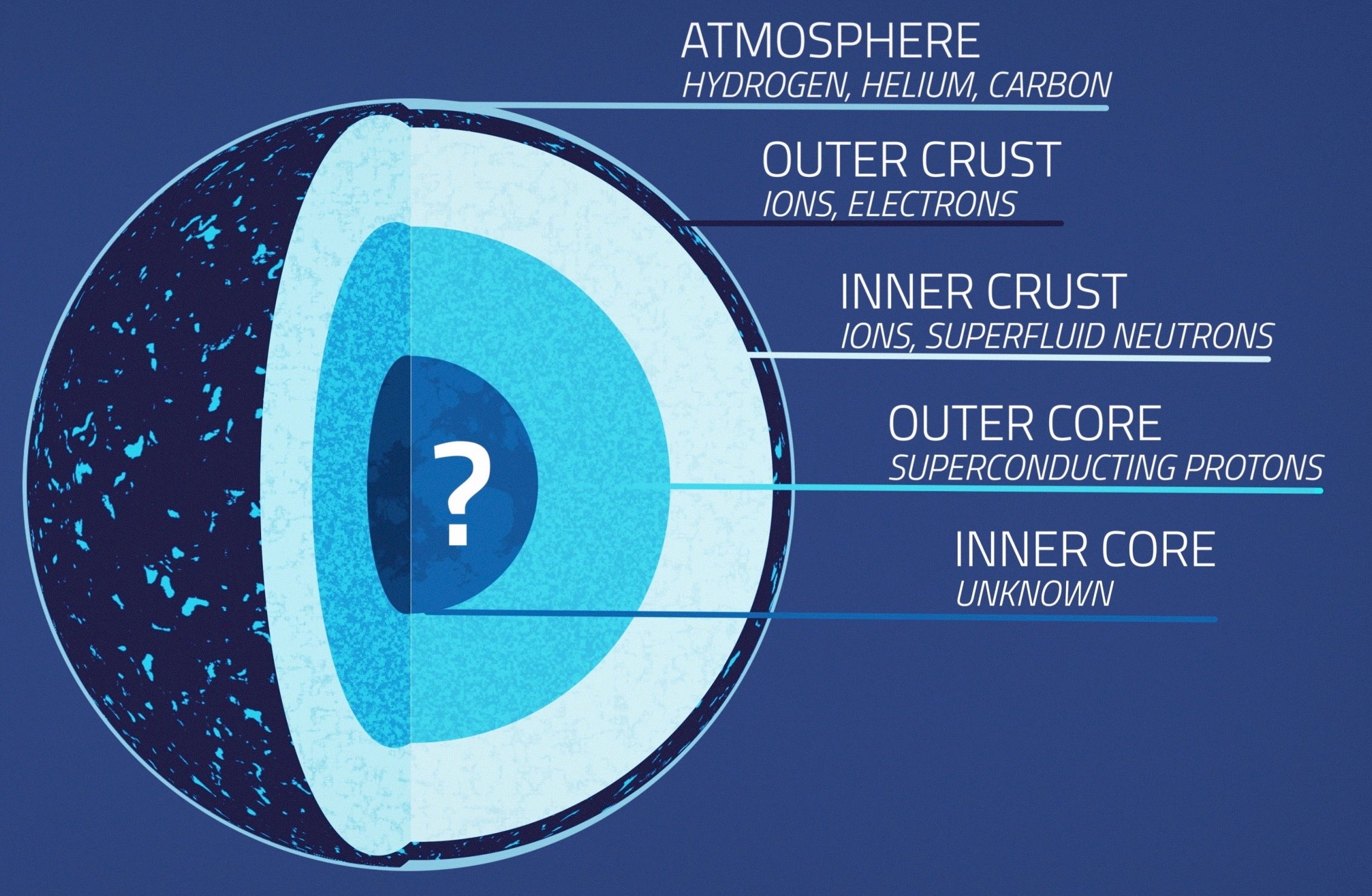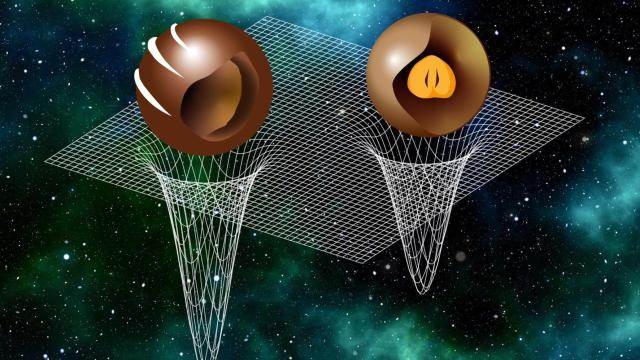Astrophysicists modelling the insides of neutron stars have found that the extremely compact objects have different internal structures, depending on their mass. They suggest thinking of the stars as different types of chocolate praline, a delicious treat — but that’s where the similarities end, at least as far as we know.
Neutron stars are the extraordinarily dense corpses of massive stars that imploded; they’re second only to black holes in terms of their density. Neutron stars are so-named because their gravitational force causes their atoms’ electrons to collapse onto the protons, creating an object that is almost entirely composed of neutrons.
Neutron stars’ gravitational fields are super intense. If a human observer went near one, they’d be torn apart at an atomic level. Their gravitations fields are so strong that a “mountain” on a neutron star would stand less than a millimetre tall.
The recent research team constructed millions of models to try to discern the internal workings of these stars, which are remarkably difficult to study and, as a result, are more the domain of theory than observation.
The researchers found that lighter neutron stars — those with masses about 1.7 times that of our Sun and under — should have soft mantles and stiff cores. Heavier neutron stars have the opposite, according to the team’s findings, which were published today in The Astrophysical Journal Letters.
Luciano Rezzolla, an astrophysicist at the Institute of Theoretical Physics and who led the research, likened the stars’ structure to chocolate pralines.
“Light stars resemble those chocolates that have a hazelnut in their centre surrounded by soft chocolate, whereas heavy stars can be considered more like those chocolates where a hard layer contains a soft filling,” Rezzolla said in a Goethe University Frankfurt release.
The researchers modelled over a million possible scenarios for neutron star makeup, based on expectations for the star’s mass, pressure, volume, and temperature, as well as astronomical observations of the objects.
Modelling is a crucial means of interrogating neutron stars, because only a few contraptions on Earth — CERN’s Large Hadron Collider and SLAC’s Matter in Extreme Conditions instrument, for two — are capable of mimicking such intense physics.
To determine the consistencies of the stars, the researchers modelled how the speed of sound would travel through the objects. Sound waves are also used to understand the internal structure of planets, as the InSight lander has intrepidly done on Mars.

“What we have shown, by constructing millions of equation of state models (from which the sound speed can be computed), is that maximally massive neutron stars have a lower sound speed in the core region than in their outer layers,” said Christian Ecker, an astrophysicist at Goethe University, in an email to Gizmodo.
“This hints to some material change in their cores, like for example a transition from baryonic to quark matter,” Ecker added.
The researchers also found that all neutron stars are probably about 12 km across, regardless of their mass. That measurement is less than half that of a 2020 finding that the typical neutron star was about 22 km across. Despite that size, the average neutron star mass is around half a million Earths. There’s dense, and then there’s dense.
While the findings offer some insight about the diversity of neutron stars in terms of their consistency, the researchers did not investigate the stars’ ingredients or how they fit together. (If you’ve gotten this far, neutron stars are not actually made of chocolate.) Some suspect that neutron stars are neutrons all the way down; others believe that the centres of the stars are factories for exotic, hitherto unidentified particles.
But for the most part, these superdense enigmas remain just that. Thankfully, there are observatories set up to collect more direct data. Mergers (i.e. violent collisions) between neutron stars and with black holes can reveal the mass of the involved objects, as well as the nature of neutron star material.
Projects like NICER, NANOGrav, the CHIME radio telescope, and the LIGO and Virgo scientific collaborations are all teaching physicists about neutron star size and structure.
More observational data can be fed into models for better estimates of the stars’ aspects. Ecker added that very massive neutron stars (in the ballpark of two solar masses) would be particularly helpful in better constraining expectations of the physical characteristics of these extreme objects.
With any luck, we may soon get more details of the exact ingredients of these giant cosmic pralines — and how their recipes may differ depending on their size.
More: Extremely Massive Neutron Star May Be the Largest Ever Spotted
